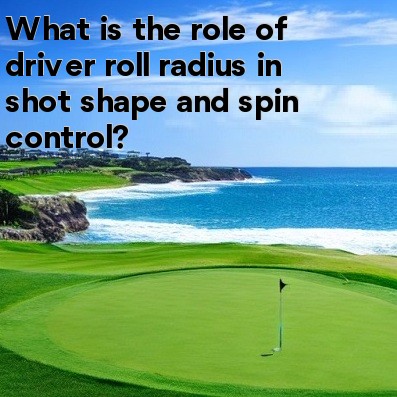
The role of driver roll radius in shot shape and spin control is an important aspect of golf that can greatly affect a player's performance.
Firstly, let's understand what the driver roll radius is. The roll radius refers to the curvature of the clubface from heel to toe. It determines the amount of loft on the clubface when it is square to the target line.
When it comes to shot shape, the roll radius plays a significant role. A larger roll radius, known as a flatter face, tends to promote a draw or a hook shot. This is because the flatter face tends to close more quickly and impart more side spin on the ball. On the other hand, a smaller roll radius, also referred to as a more rounded face, tends to promote a fade or a slice shot. The rounded face is more likely to stay open through impact, reducing the amount of side spin on the ball.
In terms of spin control, the roll radius also has a crucial impact. A flatter face with a larger roll radius tends to reduce backspin on the ball. This is advantageous when the player wants to maximize distance. With less backspin, the ball has a lower trajectory and can roll out further upon landing. On the other hand, a more rounded face with a smaller roll radius tends to increase backspin. This is helpful when the player wants to control the ball's flight and have it stop quickly upon landing.
The player's swing mechanics and swing plane also play a role in shot shape and spin control. However, the roll radius of the driver can amplify or diminish these factors. A player with a naturally inside-out swing path may find that a flatter face exacerbates their draw tendency. Conversely, a player with an outside-in swing path may find that a more rounded face helps mitigate their slice tendency.
As with all aspects of golf equipment, the role of the driver roll radius in shot shape and spin control is highly individual. What works for one player may not work for another. It is crucial for golfers to experiment with different drivers and their roll radius to find the optimal combination that suits their swing and playing style.
In conclusion, the driver roll radius plays a crucial role in shot shape and spin control in golf. A larger roll radius promotes a draw or hook shot, while a smaller roll radius promotes a fade or slice shot. Additionally, the roll radius affects the amount of backspin on the ball, with a flatter face reducing backspin for more distance and a rounded face increasing backspin for greater control. Ultimately, finding the right driver roll radius for your swing and playing style is key to optimizing your performance on the golf course.





